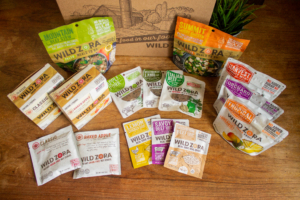Experts, Support Groups & Meet-Ups
While I’m not a huge one for “support” groups sometimes you just need someone to bounce things off of, ask questions, get a little motivation and most importantly not feel like you’re all alone.
I have just one word of warning for you on support groups – always be sure to educate YOURSELF and do NOT rely on information you receive in support groups as the be-all, end-all word on any topic. You should always seek appropriate medical guidance or nutritional assistance over advice you find in support groups. I’m saying this here because I’ve left many support groups because of wildly varying and inaccurate advice – I think they can be very dangerous and prefer to do my own research within the parameters of experts I trust, and when necessary discuss my concerns with the experts. You should know that even groups put together by the experts openly admit that they are NOT closely moderated, and that they rely on “peer-support” – so please BEWARE!
That said, I’m going to start with where to find expert advice. Sadly you may have to search further than your G.P. or medical specialist.
Experts
Reliable Advice Online
There’s a LOT of information out there … and while Google is a wonderful thing, it is so easy to spend copious amounts of time trying to sift through the good, the bad and the down-right scary! I can tell you from experience you’re better off to find a few exceptional resources and stick to them like glue for your information. Sure, from time to time you may need to branch out, but if you have a solid foundation of online resources that you know are reliable you’ll save yourself valuable time and precious energy.
My top-3 recommendations for exceptional, reliable AIP information online are:
Autoimmune Wellness
The Paleo Mom – Dr. Sarah Balantyne
Phoenix Helix
You’ll find a few key articles on the Resources Page listed under the title Advice for Beginners.
Functional Medicine Practitioner
As with any significant dietary change, you should in fact only undertake the AIP at the recommendation of a trained nutritional coach or physician.
If you’ve only started on the AIP due to personal research and you’re unsure whether it’s right for you and your condition, I highly recommend you seek the advice of a Functional Medicine Practitioner. You can find one near you using this listing – Functional Medicine Practitioner Listing, and you can read more about it here in my post – Finding Your Root Cause.
Paleo-Friendly Autoimmune Specialist MDs
Yes, they do exist, but they can be hard to find. Thankfully, Eileen at the Phoenix Helix has complied and maintains a list on her website – check it out here.
Personal AIP Health Coaches
If you know you need to be on an AIP diet but are struggling to personalize it to your own needs and health condition, you may want to consider the services of a Health Coach. This listing will take you to a list of coaches certified by the experts in the Autoimmune Protocol – Certified AIP Health Coach Listing.
AIP Coaching Programs
Beyond hiring a personal AIP Health Coach there are some options for joining online guided group support programs. There are three that I recommend, plus one for autoimmune exercise – you can learn more about them on my Coaching Page. The one you choose will depend largely on your comfort level with making diet and lifestyle changes and whether you’re a self-starter or need more of a support group surrounding you.
AIP Medical Research
I get asked by a lot of members joining our Facebook Group as to whether there is really any proof that the AIP works for autoimmune disease, and I always reply with an emphatic, YES! If you’re interested in learning more about the medical studies that have been conducted about the efficacy of the AIP, you can keep up to date via the Autoimmune Wellness website here.
Living Matrix Health Timeline
Whether you’ve seen a Functional Medicine Practitioner yet or not, you’ve probably heard a lot about the importance of finding the “root cause” or “underlying cause” of your autoimmune disease.
To help you get the best support this little tool can help you provide your medical team with a thorough health history and potentially will help you find your root cause, making it easier to achieve healing.
The Living Matrix offers something called MyTimelineTM it’s a powerful tool that enables you to easily document the unfolding phenomena that lead to your ill health – a process that often occurs over many years, perhaps even a lifetime. It gives you and your practitioner the “Big Picture” so you can take the necessary steps to build back your health.
The process to complete your timeline can be long and require a bit of work, but it prompts you to think about your symptoms and issues and – just as importantly – when they may have begun. It also asks about key events in your life so that you can begin to see the patterns – it’s really very amazing! The process was an eye opener to me and can really help your Functional Medicine Practitioner to quickly grasp your health history. Click here to go to the access page and get started building your own timeline (don’t be afraid to add extra details you feel are important) – you’ll even be able to print out a summary when you’re complete. You can read more about it here in my post – Finding Your Root Cause.
Meet Ups & Support Groups
Location Specific Groups
Looking for support and want to connect with fellow AIP-ers in your own local area? Maybe you need advice where to find AIP compliant ingredients locally but are having a hard time – who better to ask than someone that lives in your area!
Be sure to check out this comprehensive list of support groups compiled by Autoimmune Wellness … it’s wonderful!
You can find a full list here – they’re constantly updating this, so just select the latest list.
Basic AIP Support Groups – NOT closely moderated – they all leave me wishing I could find a good one to suggest to you:
AIP Support
Strict AIP Support A-Z
AIP Elimination Diet Support Group
Topic-Specific Groups
Emotional Autoimmunity Website – Navigating the Emotional Side of Life with Chronic Illness – there used to be a support group but it has been closed down – probably too much work because this one WAS closely moderated.
Facebook – AIP Instant Pot Recipes
Facebook – Coconut-Free AIP Recipes Group – If you have an allergy to coconut but need to stick to the AIP Diet, you may wish to try this group.
Facebook – AIP Canning, Preserving, Dehydrating and Fermenting
Facebook – Low Histamine AIP
Facebook – AIP During Pregancy and Breastfeeding
Facebook – Low FODMAP Recipes & Support – NOT AIP but you may find it helpful
Motivation
If you haven’t already read my motivational message, be sure to visit the page by clicking this link. It may just be what you need for a little pick-me-up, and it also directs you to my article on the stages of grieving over illness.






